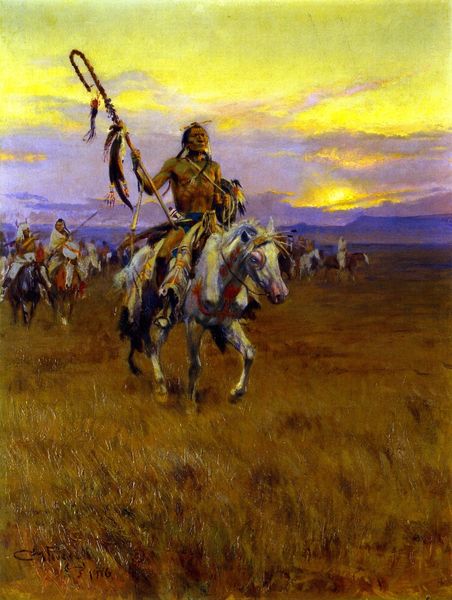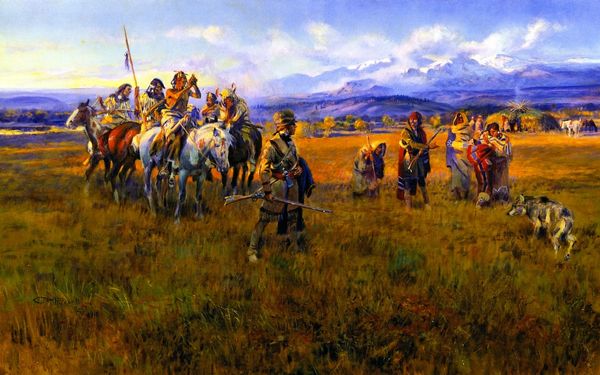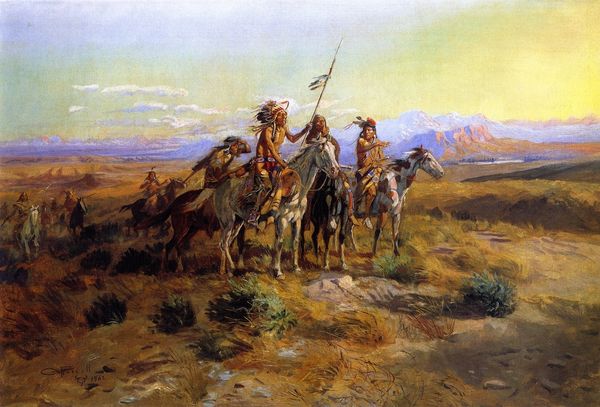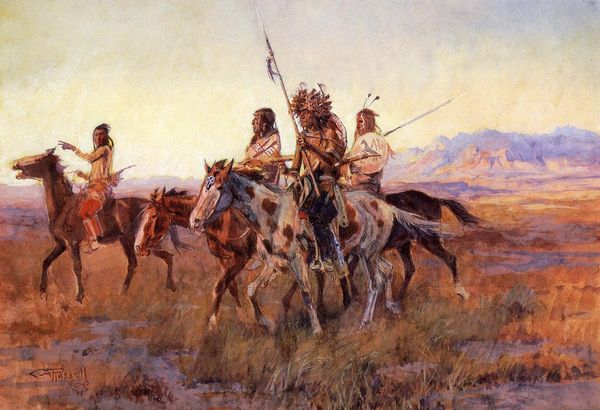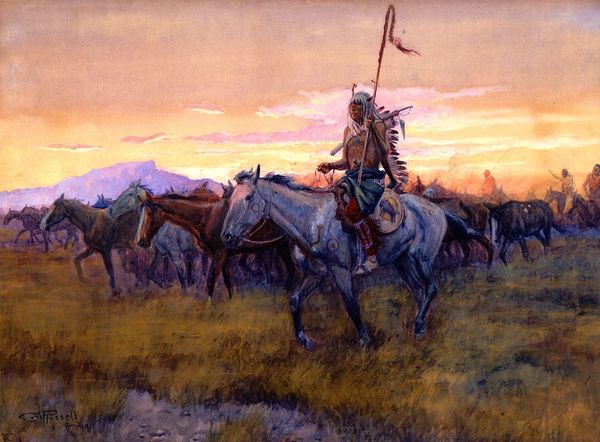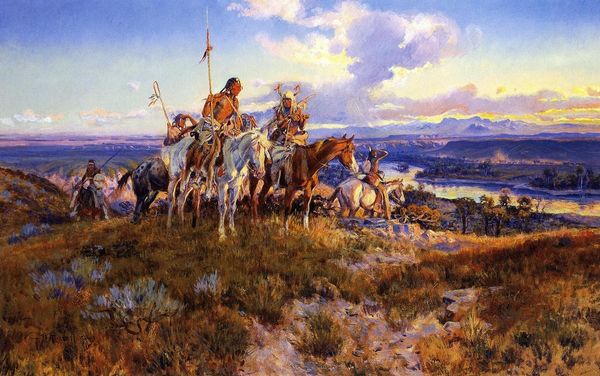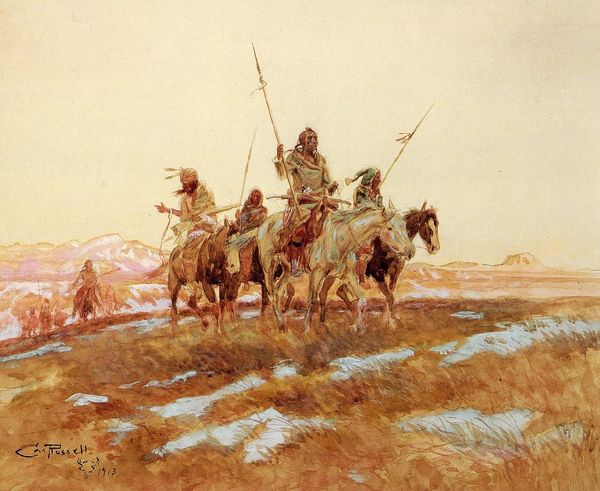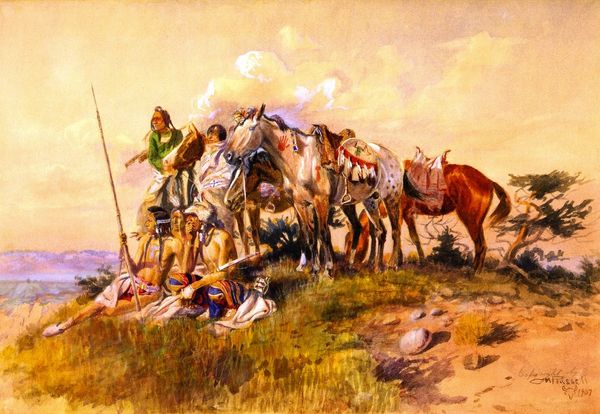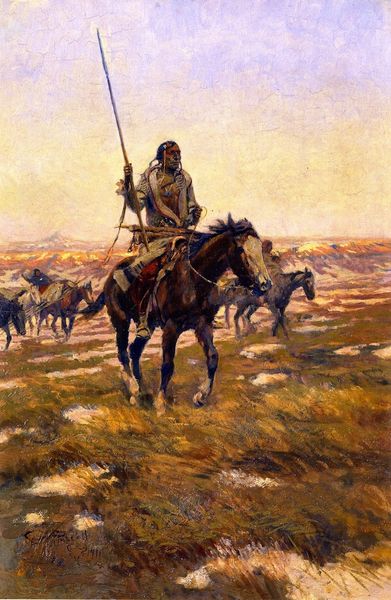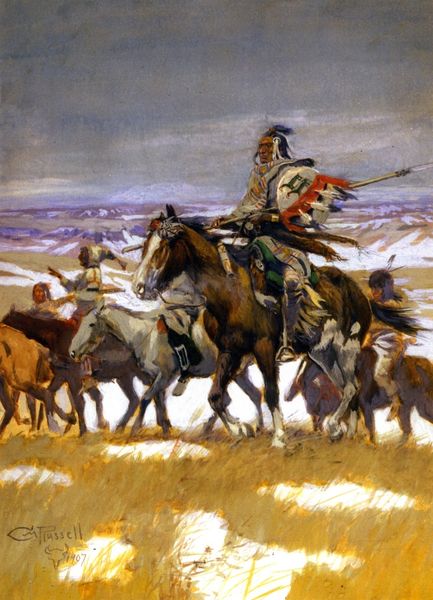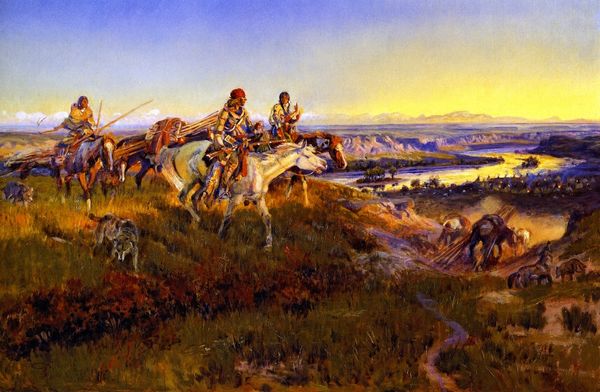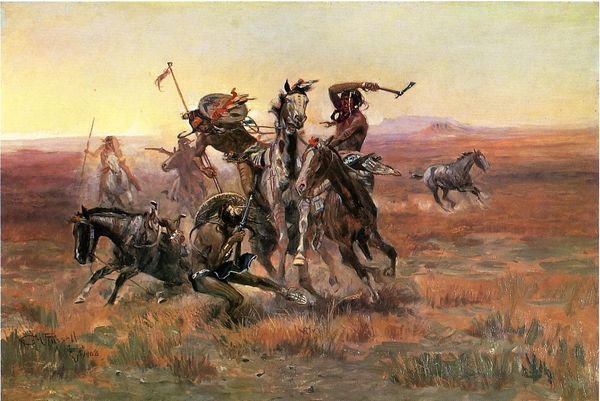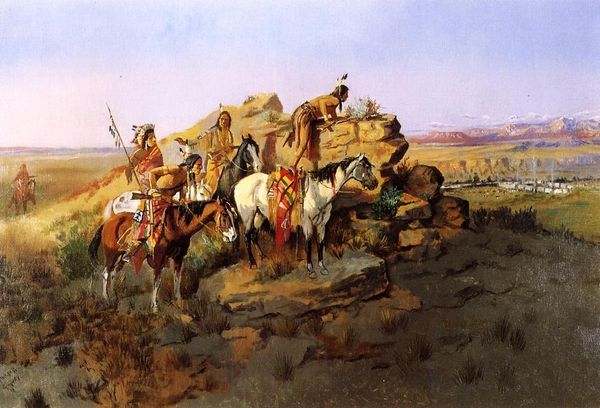
painting, oil-paint
#
painting
#
oil-paint
#
landscape
#
figuration
#
nature
#
oil painting
Copyright: Public domain
Editor: So, we're looking at "The Wolfmen," painted by Charles M. Russell in 1925, using oil on canvas. It strikes me as a classic depiction of the "Wild West," but there's a lot of activity in the background. What do you see when you look at this painting? Curator: I see a romanticized yet ethnographic study rendered in oil. Consider the source of those materials: linseed, pigment, canvas. Each requires extraction and labor, reflecting Western industrial systems encroaching upon indigenous lands and life ways. Where did Russell acquire these materials and what was the labor dynamic in securing them? Editor: That's fascinating. I hadn't thought about it in terms of resource extraction. How does this change how we view the "subject" in the foreground, namely the "Wolfmen" and their procession in relationship to the community behind? Curator: The subjects are presented to appear untouched and unspoiled in the light of Romanticism. But who actually fashioned the beaded adornments? Who tanned and sewed their garments? Consider that painting materials have concealed labour relations within the painting and on what terms that indigenous skill might now be collected. What’s preserved and what’s lost, would you say? Editor: I guess the painting's surface belies a far more complex history, one that intertwines industry and romanticism to depict exploitation and loss. Thanks, that gives me a lot to think about in terms of visual and material culture. Curator: Indeed. It requires us to challenge idealized depictions and look beyond the canvas to its construction and embedded colonial relations, to think critically about labor and extraction in our modern era, no?
Comments
No comments
Be the first to comment and join the conversation on the ultimate creative platform.
